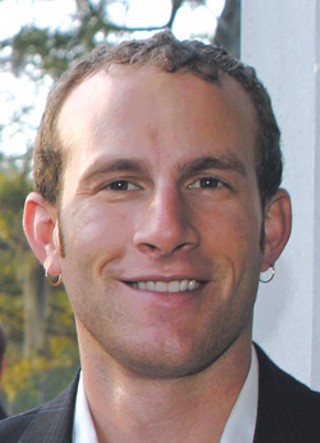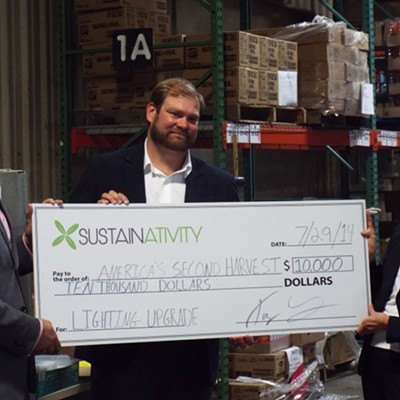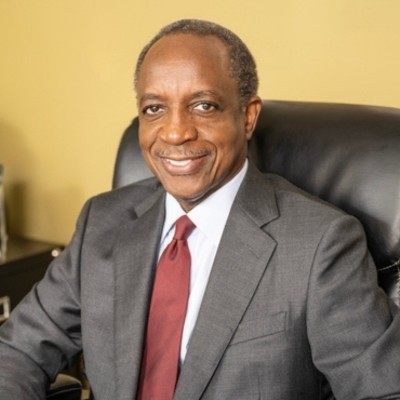IN 1969, David Brower, founder of Friends of the Earth, coined the slogan “think globally, act locally.” Tommy Linstroth, a Savannah resident, keeps this adage in mind in his recently published book, Local Action: The New Paradigm in Climate Change Policy.
Linstroth’s book transcends the traditional dialogue on climate change to present approachable, community-level solutions to an international crisis. Linstroth’s tactic is manageable and empowering, asserting that the unwillingness of the federal government to take action does not equate defeat for the masses. He takes something that is so unequivocally caught at the global level and addresses it through the local lens.
To be sure, he says, “there is pressing need to take action now to fight climate change - and if it won’t happen at the federal level, let’s do it all across the nation at the local level.”
Through “Local Action,” Linstroth’s motivational call-to-action is both refreshing for those who are worn out by the climate change debate and imploring to those who feel otherwise helpless to make a difference.
Tommy Linstroth is the Head of Sustainability Initiatives at Melaver, Inc. here in Savannah. In addition to his day job, he’s president of the Savannah Chapter of the U.S. Green Building Council, a trustee for Live Oak Public Libraries, and serves on the Board of Directors of the Georgia Conservation Voters Education Fund.
In town, Linstroth promotes several environmental initiatives and networks, including Savannah Recycles? and GreenDrinks Savannah. Local Action marks his literary debut.
His work on the book began in 2004 as an expansion of his master’s thesis, which looked at greenhouse gas emissions from cities. At the time, Linstroth was in Berkeley, California completing a fellowship at the International Council for Local Environmental Initiatives (ICLEI).
“I started seeing all the hard data on how much emissions cities were actually preventing from being generated, as well as the financial benefits that tended to arise from those actions,” explains Linstroth. “This small sampling of cities saved over $400,000,000 annually while preventing millions of tons of greenhouse gases from reaching the atmosphere every year.”
Ten years after the drafting of the Kyoto Protocol the U.S. government remains as one of only two signatories, the other being Kazakhstan, not to have ratified the protocol. While the current and former executive administrations have stuck their heads in the sand, some 160 U.S. cities have responded to the climate change crisis by signing on to ICLEI’s Cities for Climate Protection campaign.
Thanks in large part to Linstroth’s efforts, the City of Savannah is among those participants and is presently analyzing local greenhouse gas emissions and drafting a plan to reduce those emissions.
According to Local Action, emissions reductions can mean real dollar savings in addition to cutbacks in toxic pollutants like nitrous oxide, sulfur dioxide, and particulate matter.
Linstroth’s message resonates well with City of Savannah officials. Sean Brandon, Assistant to the City Manager, has worked alongside city leaders to promote environmental initiatives that will benefit the community.
“Our citizens’ quality of life has always been a centerpiece of the Savannah experience,” says Brandon. “Our air, climate, parks, squares and beaches have defined us largely for the better. Our challenge is to make those same things define us for the better in the future.”
Linstroth points out that for the first time in history more people live in cities than in the country. Fortunately, he says, “cities can implement programs in a matter of months. And, ultimately, cities are where the greenhouse gases are being emitted,” he continues. “So the cities seem a logical place to start to reduce emissions.”
Linstroth identifies three related reasons why local governments can be the ideal place to address global warming. First, local governments control many of the factors related to greenhouse gas emissions, such as land-use decisions, residential and commercial regulations, transit options and solid waste disposal.
Second, local authorities can encourage climate change action by others through lobbying the national government and demonstrating the best practices costs and benefits of controlling greenhouse gas emissions.
Finally, municipalities have considerable experience addressing local environmental impacts within the fields of energy management, transportation and planning.
Local Action is a how-to guide for local communities that offers best practices and information on community wide initiatives and the internal workings of local governments, all based on real programs instituted by various cities around the country. Watch for the specific examples of Santa Monica’s green power program, Seattle’s recycling program, and Berkeley’s RICO program.
Linstroth also introduces readers to Fort Collins, Colo., and Portland, Ore., two devout case studies from the numerous examples of municipalities that have implemented strategies for reducing carbon emissions. Fort Collins and Portland well illustrate the process, the practices and then the feedback from those policy adjustments. By educating folks on the work already being done, Linstroth hopes to provoke other cities to begin their own climate change initiatives.
“The reactionary nature of public policy, and especially environmental policy, is a major problem when you look at climate change,” says Patty McIntosh, Coastal Vice President of the Georgia Conservancy and Southeast Coastal Climate Network steering committee member.
“We aren’t afforded the same luxuries with this crisis as we were when the Clean Air Act or Endangered Species Act were introduced,” she says. “Once sea levels rise, and the planet warms, we won’t just be able to pass a law to put things back to how they were.”
The Southeast Coastal Climate Network is a multi-state effort dedicated to fostering regional leadership in mitigating and adapting to the challenge of global warming.
There is no question that climate change is a pressing global concern. While it is important to continue to push for broad reaching federal policies, we must continue to address climate change and other environmental issues at the local level.
“If just 160 cities can prevent millions of tons of CO2 and save themselves hundreds of millions of dollars, just think what will happen when thousands of cities join the efforts,” says Linstroth. “It’s a very refreshing, hopeful thought!” 
“Local Action: The New Paradigm in Climate Change Policy” is published by the University Press of New England and was co-authored by Ryan Bell, an Environmental Planner with the Bay Area Air Quality Management District in San Francisco and former U.S. Program Manager with the ICLEI-Local Governments for Sustainability. The book can be ordered for $19.95 by calling 800-421-1561 or online at upne.com or your favorite online bookstore.
Top Ten Community Measures to Reduce Greenhouse Gas Emissions
Greening Local Buildings and Improving Efficiency
Utilizing Landfill and Sewer Gas as a Source of Green Power
Encourage Residential Recycling
Commercial Waste Reduction Programs
Promoting Reuse as a Waste Reduction Alternative
Water Conservation
Fuel Efficient Vehicles
Parking Cash Out
Promoting Bicycling
Building Materials and Vegetation to Curb the Urban Heat Island Effect
Top Ten Government Measures to Reduce Greenhouse Gas Emissions
Green Building Policies for Municipal Buildings
Comprehensive Upgrade of City Buildings
Purchase Green Power for Municipal Operations
Biodiesel for Municipal Fleets
Green the Municipal Fleet
Innovative Paper Reduction Strategies
Environmentally Preferable Procurement Programs
Concrete with Recycled Content
Light Emitting Diode Traffic Signals and Exit Signs
Promoting Public Transportation


























